The Maltese lapdog is a breed of mobile and very emotional decorative dogs with snow-white “doll” fur.
Maltese lapdogs are the darlings of French monarchs, glamorous ladies who just ask for the cover of a glossy magazine. Even in the most severe times for dogs, these snow-white fluffies were groomed and pampered, which could not but affect their character. Deprived of the need to compete for a bowl of chowder, the Maltese evolved into reckless majors who do not care about any adversity. Never discouraged and slightly eccentric lapdogs have turned into real psychotherapists who can cure the most prolonged depression. It is understandable: to find a second such breed, whose representatives are in a state of mild euphoria all 365 days a year, is simply unrealistic.
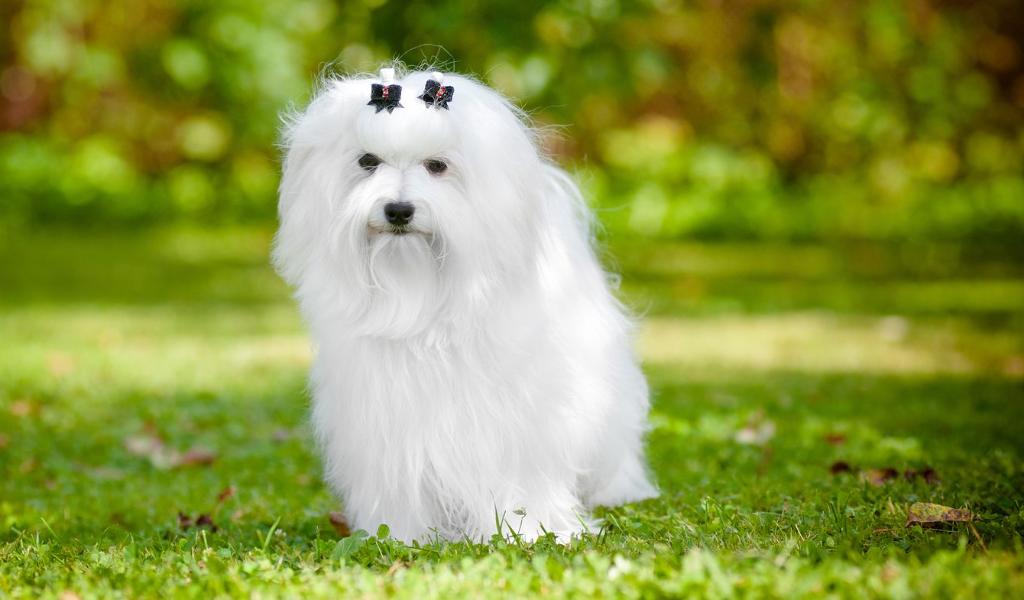
The history of the origin of the Maltese lapdogs is a continuous hypothesis and assumptions and almost no reliable fact. According to experts, the glorious family of Maltese is more than two thousand years old, and it is easy to believe in it since the first images of big-eyed puppies can be found in the drawings of the ancient Egyptians. As for the name of the breed, the lapdogs owe them a geographic error.
At first, the animals were called Melitta, after the island of Melinda in the Adriatic Sea. However, this piece of land had a “twin brother” – today’s Malta also called Melinda. There was simply no one to fix the difference between these two islands at that time, so they preferred to forget about it. Later, Melite was renamed into Maltese lapdogs, without paying attention to the fact that Malta was not at all the real homeland of animals.
The earlier history of the breed is no less controversial. In disputes about how the ancestors of Melite reached the Adriatic coast, scientists reach the point of absurdity. Some experts attribute the relationship to the lapdog with the Tibetan Terrier and travel along the Silk Road from Asia to Europe. The fact that two thousand years ago the aforementioned route was not popular, scientists prefer not to mention. The version about the Swiss roots of the Maltese looks relatively plausible: in ancient times, the inhabitants of the Swiss Alps really bred spitz-like dogs that looked like today’s lapdogs. Some researchers are trying to fit into the pedigree of Melite poodles that lived on the islands of the Adriatic Sea, although these two breeds have nothing in common.
The heyday of the popularity of the Maltese lapdogs fell on the Middle Ages. Most of all, glamorous pets were thrilled in France and Italy. The fashion for Maltese reached the shores of Foggy Albion only in the 16th century, and even later in America.
Famous owners of Maltese lapdogs:
- Susan Sarandon,
- Patricia Kaas,
- Elvis Presley,
- Barack Obama,
- Elizabeth Taylor,
- Alla Pugacheva,
- Cindy Crawford.
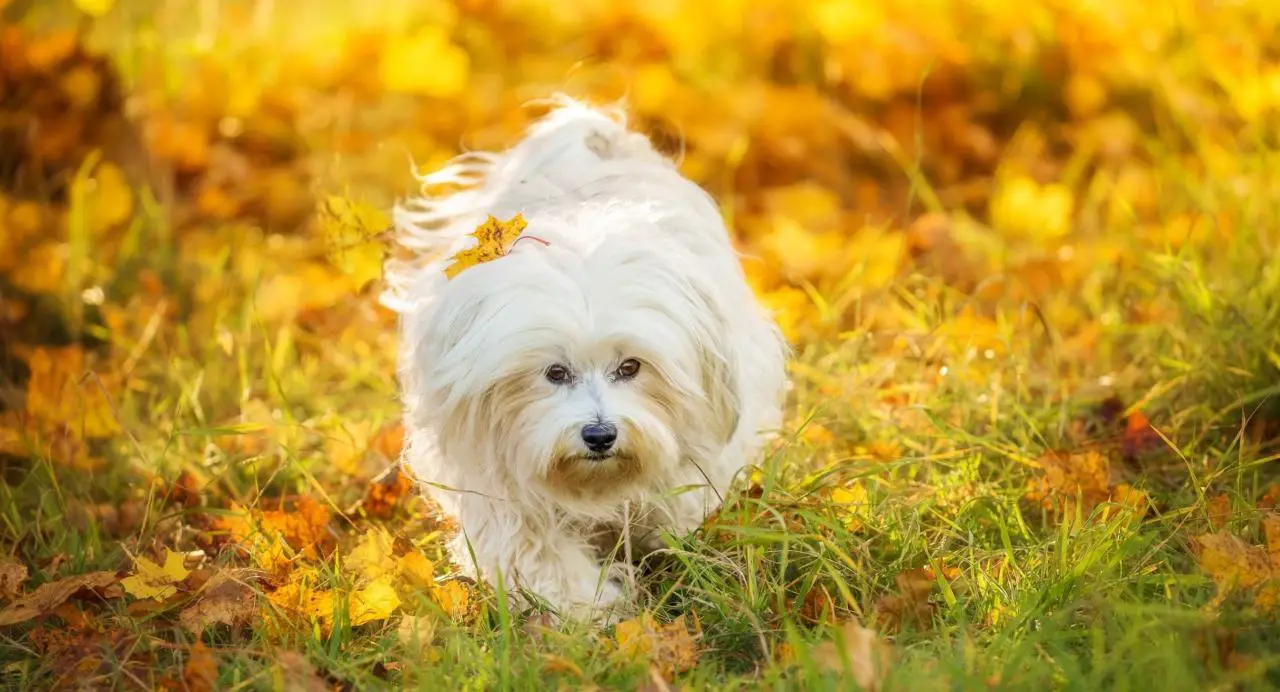
The breed characteristics of the Maltese lapdogs are enshrined in the standards of the three cynological associations. For example, domestic breeders trust the Federation of Cynological International (FCI) standards more. In England, a set of characteristics approved by the UK Nursery (UK) is preferred. The puppies across the Atlantic have their own standard developed by the American Kennel Club (AKC).
For your information: American Malteses are very different from their European counterparts. Overseas lapdogs weigh less (ideally up to 2.7 kg), their hair is much shorter, and their muzzle is slightly narrower than allowed by the FCI standard.
A separate caste is made up of the so-called mini-Maltese and baby-face Maltese. In the first case, these are miniature individuals weighing from 1.5 to 2.5 kg, which are more common among the “Americans”. Baby-face puppies are born to both American and European lapdogs. Their distinctive feature is a shortened muzzle, which gives the dog a cute, deliberately childish look. Such animals are not allowed to exhibition events, but among fans of Maltese they are in high demand precisely because of their own “photogenicity”.
The skull of a Maltese lapdog is ovoid, of medium size (mesocephalic gradation), with well-developed superciliary arches. The back of the head is flat, with a barely noticeable occiput. The parietal zone is slightly convex, the forehead line is parallel to the muzzle line. The median groove is almost invisible.
The Maltese’s muzzle accounts for ⅓ of the length of the entire head. With distance from the base, the muzzle gradually narrows, and its tip is rounded. There is a pronounced stop between the forehead and nose (about 90 °).
The nose is straight, covered with long hair reaching the lower jaw. The lobe is large, moist, with well opened nostrils. In individuals that meet the standard, the lobe is black, not oblique, and does not protrude beyond the dorsum of the nose.
The upper lip resembles a semicircle in outline and hangs slightly over the lower one. Maltese lips are black and covered with hair.
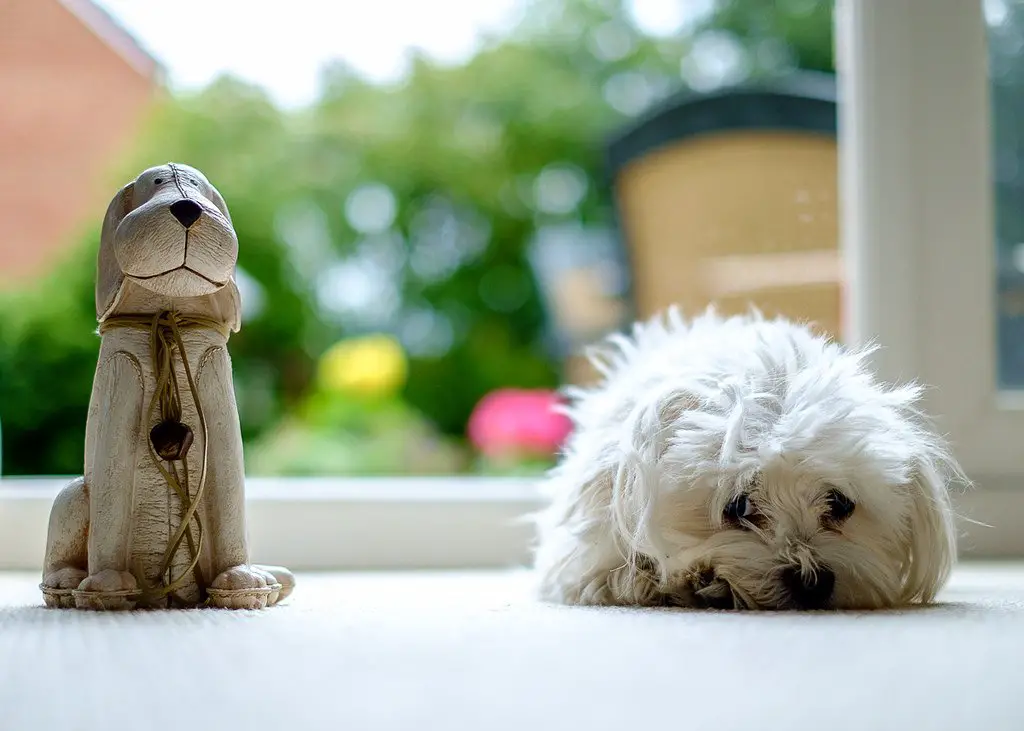
The jaws are well developed, but not massive. The bite is complete, scissor bite, strong white teeth.
The purebred Maltese has large, rounded, and slightly protruding eyes. The ideal iris shade is dark ocher. Eyelids with black edging, tight-fitting. The look is lively, open.
Hanging type, close to the muzzle, in the shape of a triangle with a wide base. Stand tall. The hair on the outside of the ear canal is thick, reaching down to the shoulders. In a state of arousal, the ears may rise slightly.
The neck is hidden under the abundant hair and is carried almost vertically. The length of the neck is approximately equal to the length of the head.
Deep rib cage with moderately curved ribs. The withers are implicitly expressed, the loin is even, strong. The groin areas are low enough and slightly tucked up. The croup of the Maltese is wide, even, with a slight slope in the tail area.
The front legs of the Maltese lapdog are straight. The blades are movable, set at an inclination of 60-65 °. The shoulders are longer than the shoulder blades and are inclined at an angle of 70 °. The elbows are close to the body and look straight. Turning the elbow outward or inward is considered unacceptable. Rich feathering is present on the back of the forearms. The pasterns are almost vertical and strong. Paws are rounded, abundantly pubescent, with black pads. Long hair grows between arched, tied toes.
The hind legs are straight. The thighs are dense, prominent, slightly inclined forward. The lower legs are bony, the hock joints are normal with an angle of 140 °. Seen from the rear, an imaginary line from the hock to the floor should be vertical.
The tail of the Maltese lapdog is a logical continuation of the dog’s croup. In a calm state, it is gracefully bent and the tip touches the back (sometimes the standard allows a slight deviation of the tail to the side). The tail is covered with soft hair hanging down to one side of the body. Ideally, the dewlap of the tail should reach the hocks and, mixing with the fur on the body, form a lush cascade.
The coat is light, straight, flowing in the form of a mantle. The undercoat is poorly expressed and almost invisible. In purebred lapdogs, the hair has a silky structure and is distinguished by its density. The normal length of the coat on a Maltese is 20 cm or more. The coat should be smooth, outlining the contours of the body. The presence of protruding tufts of hair and so-called feathering is unacceptable. The exception is the back of the front and hind limbs. Her feathers have a right to exist.
The reference color for Maltese lapdogs is white. Not ideal, but an acceptable color option – an ivory shade. Individuals whose coat has a pale orange tone are considered defective and will not participate in exhibitions.
An interesting fact: until the beginning of the 20th century, most cynological associations allowed variability in Maltese colors. And only by 1913 a single breed standard was approved, recognizing only individuals with white wool as purebred.
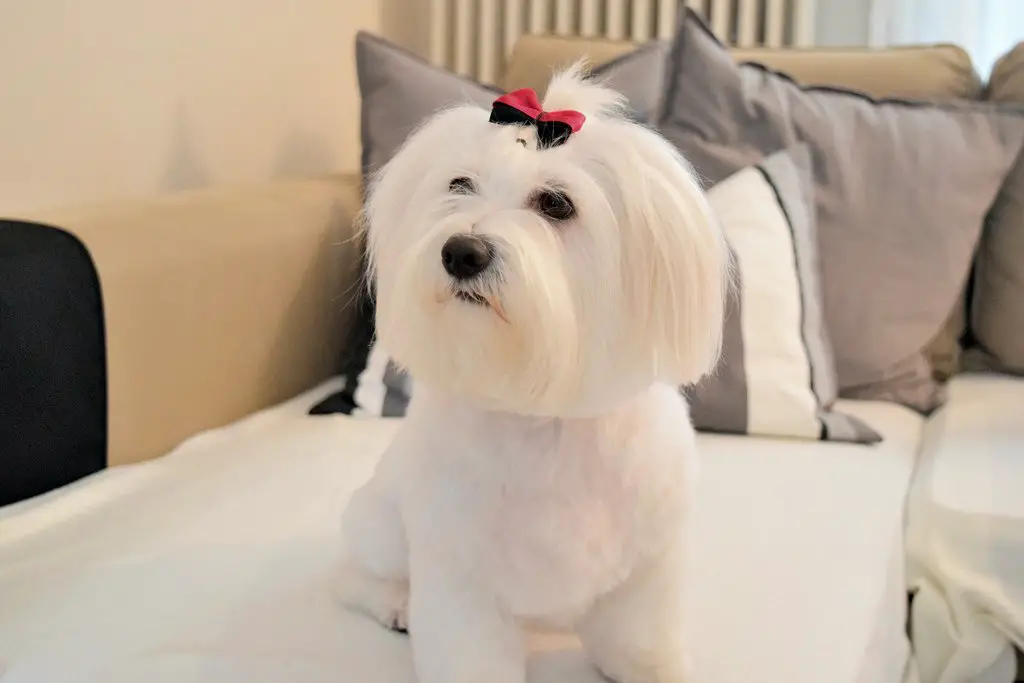
It is customary to classify as defects in appearance everything that does not fit into the framework of the breed standard. Deviations can be as slight, like wrinkles on the head or a narrow group, or serious, affecting the show “career” of the pet. The main vices that threaten the Maltese lapdog with complete disqualification:
- disproportionate head;
- depigmented nose;
- bending of the back of the nose;
- pronounced undershot or undershot mouth;
- eyes of different shades;
- the eyelids are pink;
- cryptorchidism;
- short tail;
- marks on the coat.
Wrong movements of the dog can also be a reason for disqualification. This is especially true for lapdogs with a Pekingese gait (amble), which do not push off from a horizontal surface but simply rearrange their limbs. A healthy dog should move at a fast trot. The step of the representatives of this breed is short and energetic, therefore, the Maltese in a hurry about his business resembles a rolling ball.
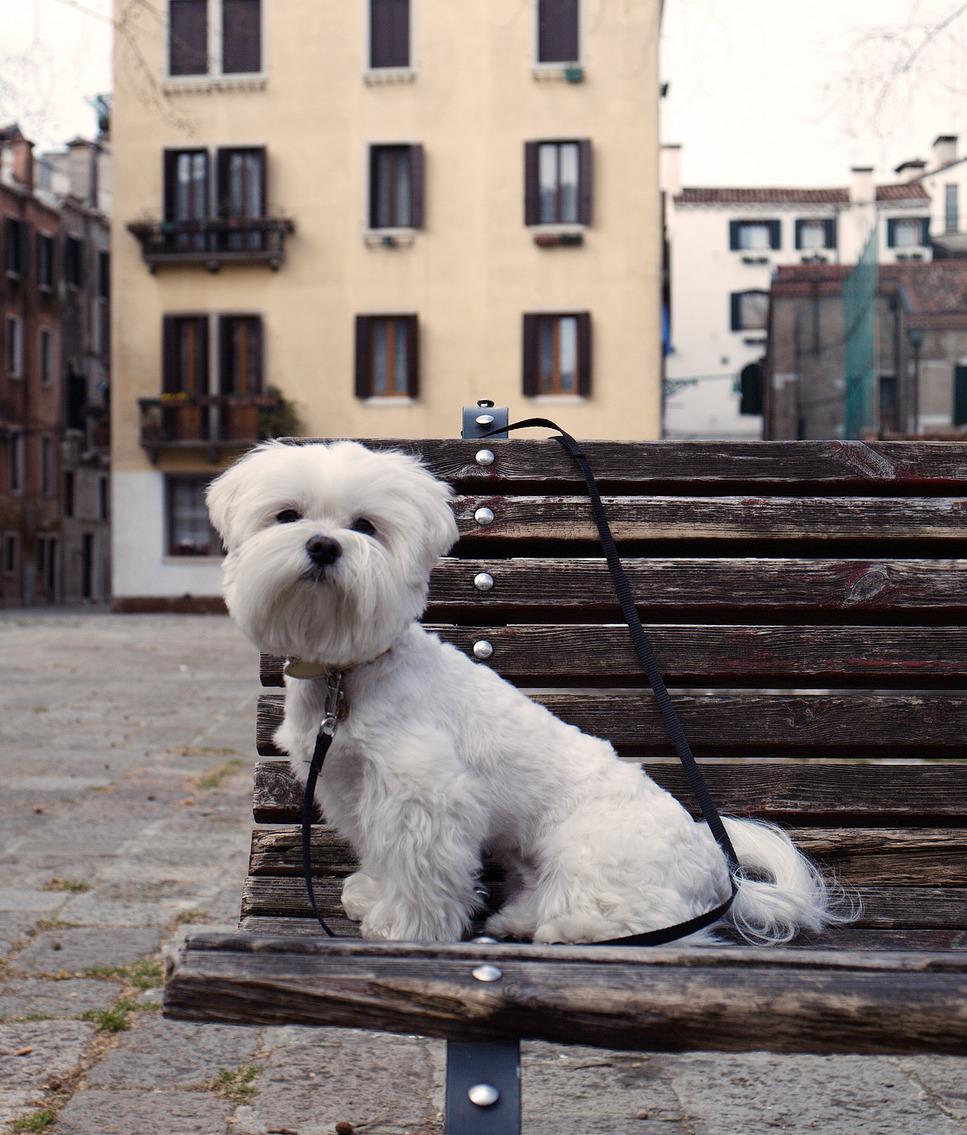
The Maltese lapdog is a perky fidget who simply needs to stay in the thick of things and be aware of all the news. Moderately friendly, but at the same time confident in their own exclusivity, Maltese will never conflict with pets. In dogs of other breeds, these energetic puppies see if not friends, then at least playmates with whom you can run and play pranks to your heart’s content. But the lapdogs do not intend to share the master’s attention with any living creature. As soon as the owner of Maltese caresses another animal, a little jealous person wakes up in his pet, capable of any meanness about an opponent.
Even though the Maltese lapdog breed is usually considered as a family one, it is at least unreasonable to bring an animal to a house where there are small children. The Maltese have a peaceful disposition, of course, but patience is by no means unlimited. With strangers, dogs have a rather tense relationship. Any unfamiliar person for a Maltese is a potential enemy who should be scared in advance and properly. Usually, the owner recognizes the arrival of an unwanted guest – from the point of view of the dog – by the pet’s choking barking. Thus, lapdogs show their wariness and suspicion towards a stranger.
White and fluffy on the outside, Maltese, unfortunately, does not always remain so on the inside. The main negative character trait of lapdogs is stubbornness. If the dog considers training useless, it will be difficult to convince him. Another dark side of the breed is the fear of being alone. If you are used to leaving your pet alone for more than an hour, get ready to take the mess in the apartment for granted. Once in a stressful situation, the dog will try to cope with the phobia in its own way, that is, gnawing on wires, scratching shoes, and making puddles where possible. The rest of the ex-Melitta is quite good-natured and docile creatures. They just need a little more affection and attention than representatives of other decorative breeds.
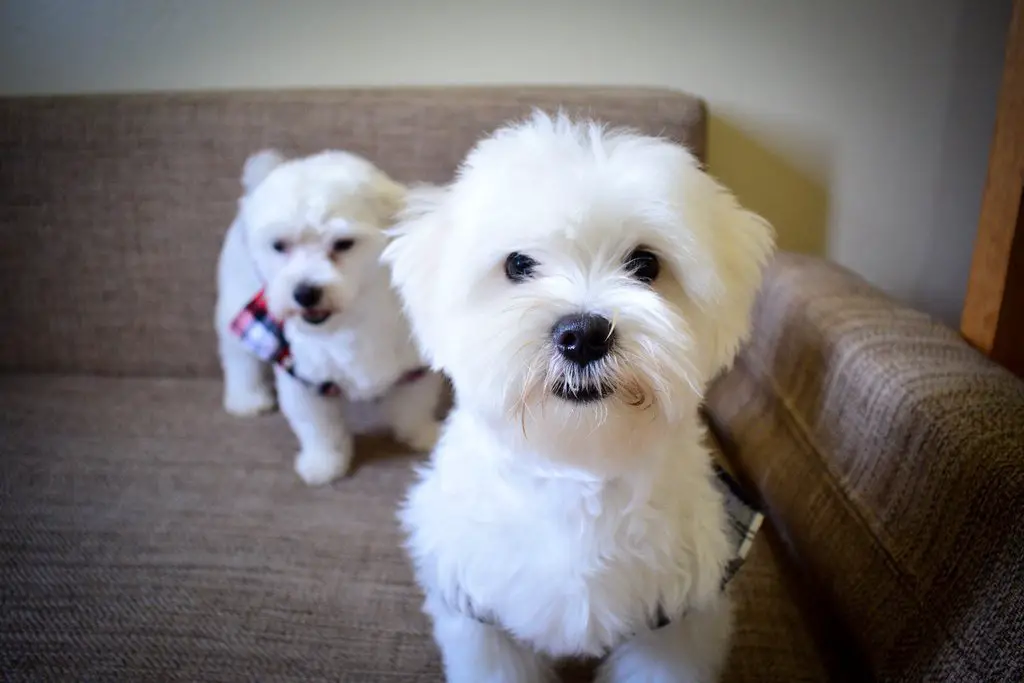
Do not succumb to the natural charm of the Maltese and do not neglect the education of the dog. Lapdogs, whose whims are constantly indulged, quickly acquire a “crown” and begin to frankly become impudent. It is better to teach snow-white pets the basics of etiquette from the very first months of life, and you should not expect great obedience from the representatives of this breed. Yes, the Maltese are smart enough dogs, but discipline is clearly not their strong point.
Maltese lapdogs are raised by the method of positive encouragement: the pet must understand that at the end of the educational process he will definitely receive a treat. To put pressure on the dog’s conscience, in this case, is useless. The absence of a tasty bonus at the end of the “lesson” is regarded by the animals as a deception, so next time the Maltese will simply ignore your call to practice.
It is very important to develop the correct reaction in the puppy to the command “Come to me!”. This is because during walks without a leash, Maltese lapdogs turn on the “exploratory mode”. The animal is constantly distracted by external factors: it disappears into the bushes in search of a source of an unusual smell, looks into abandoned buildings, and so on. In such situations, the command “Come to me!”, Pronounced in a strict, unopposed tone, is the only way to bring your pet back to reality.
Important: under three months old Maltese lapdog puppies should never be punished. The exception is extremely stubborn individuals who do not respond to prohibitions, as well as defiantly and systematically violate them.
It is pointless to get involved in serious training for the Maltese. This is a decorative breed, intended more for interior decoration and home comfort than for routine service. The only thing worth working on is the dance and acrobatic numbers, which are really fun for the Maltese lapdogs. But keep in mind that it can take weeks, or even months, to learn one simple dance, so be patient and a bag of goodies in advance to stimulate the four-legged artist.
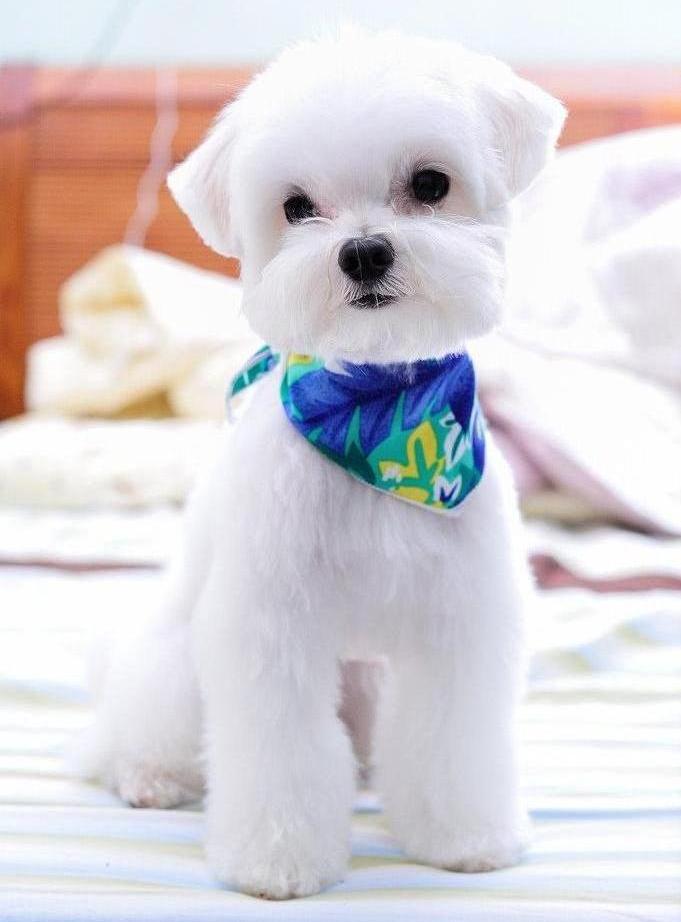
Due to their miniature build, Maltese lapdogs feel free and comfortable even in small apartments. Equip your dog with a secluded corner with a couch away from drafts and sunlight, and he will be immensely happy. Maltese puppies have fragile skeletons, so you need to handle them as carefully as possible. In addition, restless puppies love to poke their nose into the most unexpected places in the apartment, which is why they are easy to step on. The best way to protect your baby from accidental injuries in the first months of life is to enclose his habitat with a small aviary, where you can place a toilet.
Things a Maltese lapdog will need:
- a bed or a house;
- combs for combing;
- claw cutter;
- squeaky toys (they adore the Maltese);
- a leash with a collar or harness;
- a ceramic or metal food bowl.
Maltese are not picky about walks and are willingly content with short outings. While the puppy is small, often take him out to places where other dogs (not stray) are walking. So the socialization process will be faster. Usually, after several walks, the baby stops seeing a threat in four-legged strangers and relaxes. By the way, finding both a puppy and an adult dog in the fresh air should be dosed: Maltese are not created for long hiking trips and quickly get tired.
The average duration of a walk for an adult Maltese lapdog is 15-20 minutes. In frosts and the off-season, pets are walked in clothes. So, when preparing for winter excursions, do not be lazy to go shopping, selling shoes and clothes for dogs.
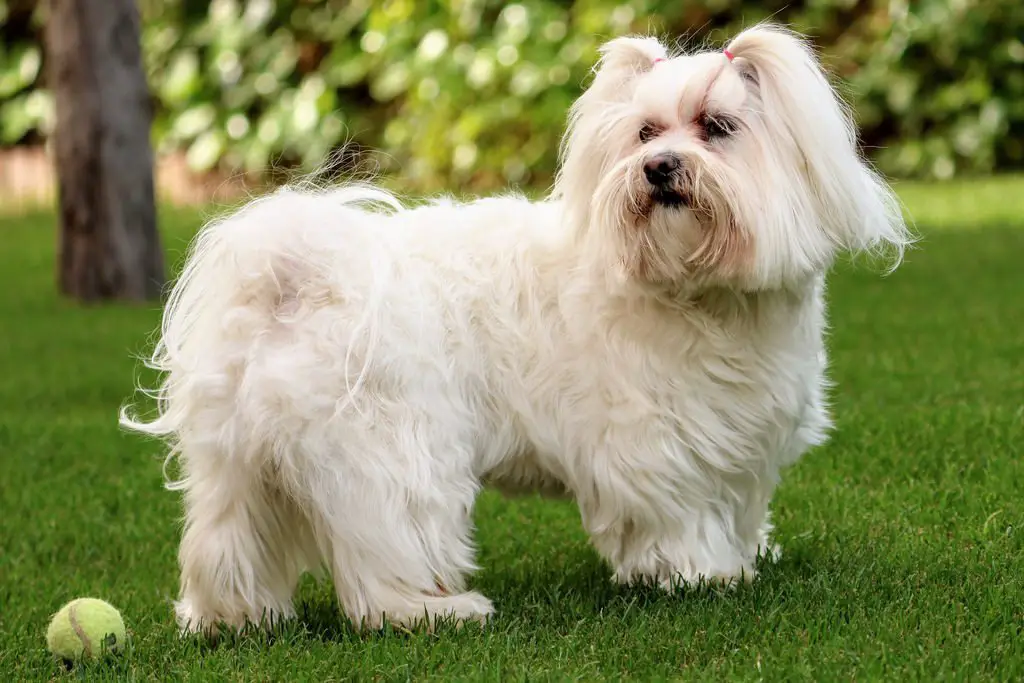
Maltese is a breed of perfectionists. And although among breeders lapdogs are reputed to be neat and clean pets, their glamorous appearance is 99% the result of the owner’s work. Accordingly, if you are not ready to bother with daily brushing and regularly visit the groomer, it is better to refuse to buy a Maltese lapdog.
It is allowed to wash animals once a week using shampoo and conditioner. After the “bath”, the wool is dried with a towel and a hairdryer, after which it is wound on tissue paper papillotes. Such manipulations help protect hair from dirt and tangles, and also improve its structure. To prevent an overly excited animal from ripping off the papillotes, you can put special socks on its hind legs.
To make the coat silky, breeders recommend using leave-in oils from a veterinary pharmacy, which must be applied immediately after washing. Another effective way to avoid tangles is a silk jumpsuit. The smooth fabric of the suit protects the Maltese’s hair from wrinkling and tangling, thereby simplifying the pet grooming process.
The lapdogs are combed every day. First, the hair is taken apart by hand, paying special attention to the belly and armpits – the areas where the wool often gets tangled. Then the “fur coat” of the animal is sprinkled with talcum powder and passed over it with a metal comb with frequent teeth. Long “bangs” on the pet’s head are best collected in a ponytail and secured with an elastic band.
If participation in exhibitions does not shine for your Maltese, it can be cut, which will save you a lot of time. In addition, it is necessary to regularly trim the hair between the toes, as well as around the anus and reproductive organs of the dog.
Maltese lapdogs have very sensitive eyes, which, moreover, often watery, leaving ugly dark grooves on their muzzle. To prevent this process from evolving, excess natural mucus in the corners of the eyes is removed with a cotton swab. Some breeders recommend wiping the eyelids of lapdogs with tea or chamomile tea, but this method has opponents who claim that such homemade lotions are of very little use. In addition, due to too frequent use of herbal decoctions, the hair around the dog’s eyes begins to fall out, which can be a reason for the disqualification of the animal at the show.
Caring for Maltese ears and teeth is no different from caring for any other purebred dog. The ears of the lapdogs are examined once a week, removing the accumulated dirt in them with lotion and a cotton swab. The teeth are cleaned every 7-14 days with a soft brush coated with the veterinary paste. If the lapdog has tartar, contact your veterinarian who will solve the problem quickly and professionally. Pay attention to your dog’s claws twice a month. The best option is to remove the excess plate with a nail cutter, and then grind the rest of the claw with a nail file.
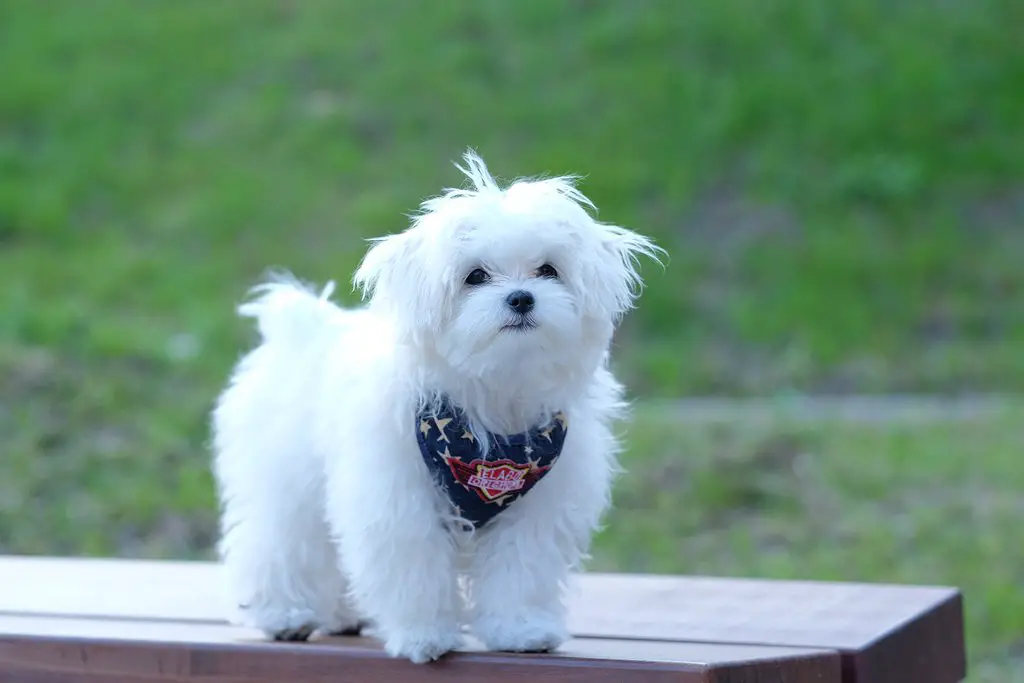
The Maltese lapdog can be fed with natural food, or it can be dried. In any case, the main thing is not to overfeed, if you do not want to find one day at home a clumsy woolen ball suffering from shortness of breath. Half of your dog’s natural diet should be meat. The remaining 50% of the daily menu is for cereals (rice, buckwheat), vegetables, and fruits. Once a week, meat can be replaced with offal or boiled sea fish. Fermented milk products in the diet of Maltese should also be present. Several times a month, your pet can be treated with quail yolk mixed with vegetable oil. Another type of delicacy useful in all respects is walnuts with a drop of natural honey.
How to feed: up to six months, lapdogs are fed four times a day. At 6 months, the number of meals is reduced to three. Yearling dogs are completely transferred to two meals a day.
Like most other breeds, smoked meats, sweets, potatoes and legumes are extremely harmful to Morteza. It is recommended to include spicy cheeses, pickles, and cabbage in the same list.
Dry food for Maltese lapdogs should be selected individually and preferably in the company of a veterinarian since some industrial varieties of “drying” can provoke allergies in the dog. Understanding that it’s time to change the diet will help the pet’s eyes, which begin to water excessively if the food is selected incorrectly.
The most common ailments in Maltese lapdogs are eye diseases such as glaucoma, blocked tear ducts, retinal atrophy, and distichiasis. In addition, the Maltese inherited from their ancestors a tendency to dermatitis and deafness. Often in Maltese lapdogs, hydrocephalus, hypoglycemia, and heart disease are found, which in the initial stages are amenable to drug treatment. But congenital subluxation of the patella is removed only by surgery, so before buying a puppy, you should focus on the condition of its limbs.
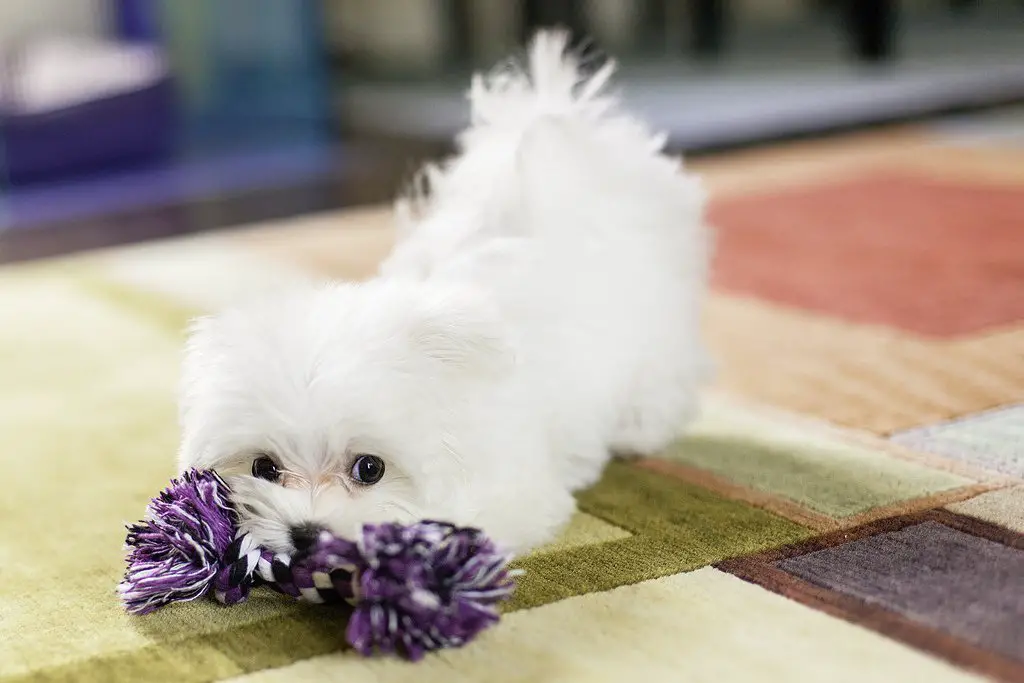
How to choose a puppy?
The first and foremost rule when choosing a Maltese puppy: the animal must fully comply with the breed standard. And this means – no discounts for the wrong bite, “small” breasts, and other defects. Carefully assess the condition of the future pet’s coat. Since Maltese lapdogs have oily and dry skin types, the hair structure of each individual will be very different.
The most common buying mistake is choosing the fluffiest puppy from a litter. Of course, such animals look prettier than their fellow tribesmen, but too much wool for a Maltese is more a disadvantage than an advantage. Do not be afraid of puppies with slightly wavy hair. With age, the animal’s coat gains strength and straightens. In this case, it is necessary to distinguish dogs with wavy coats from truly curly pets. Maltese lapdog puppies with pronounced curls of wool are real.

